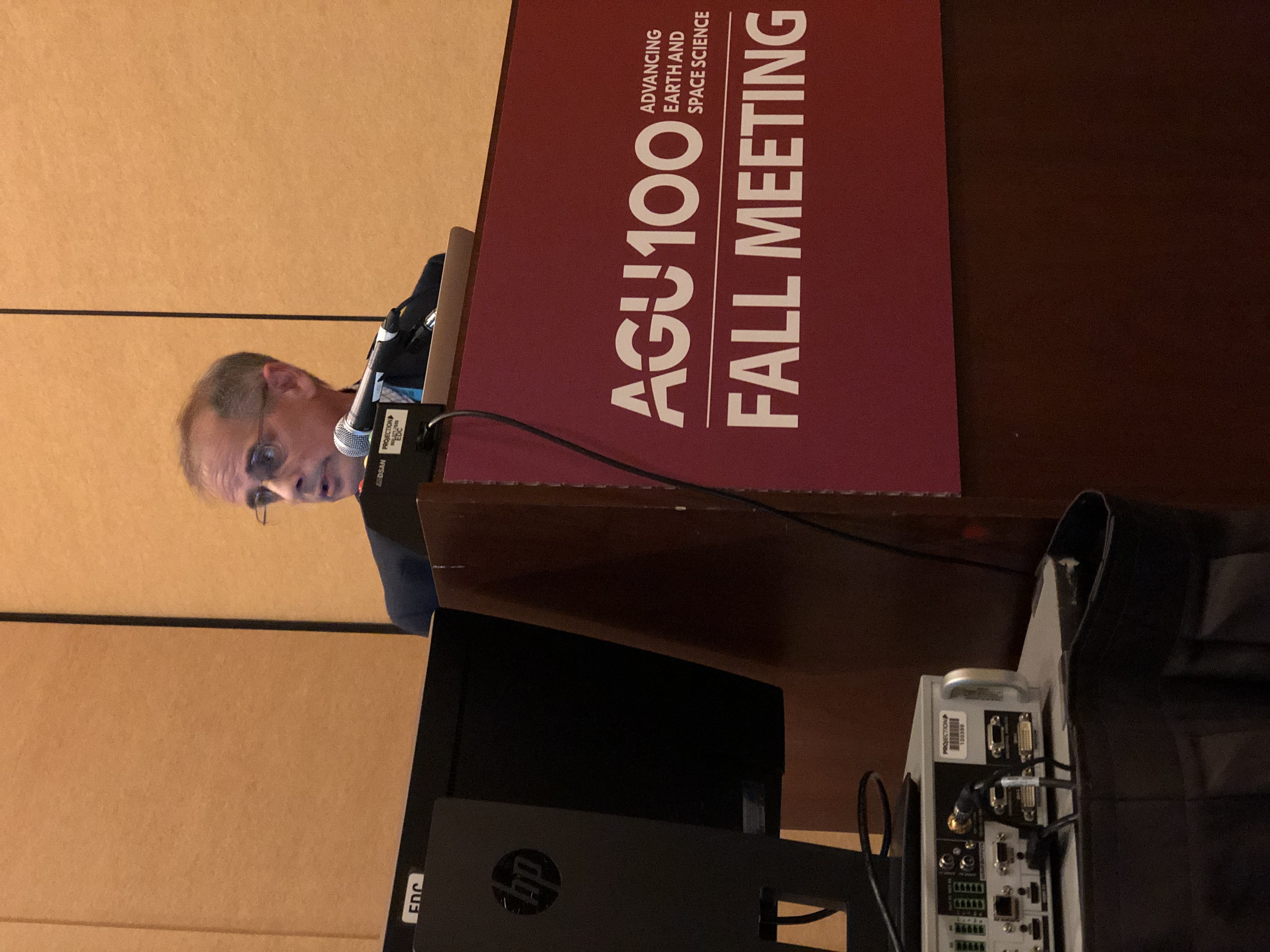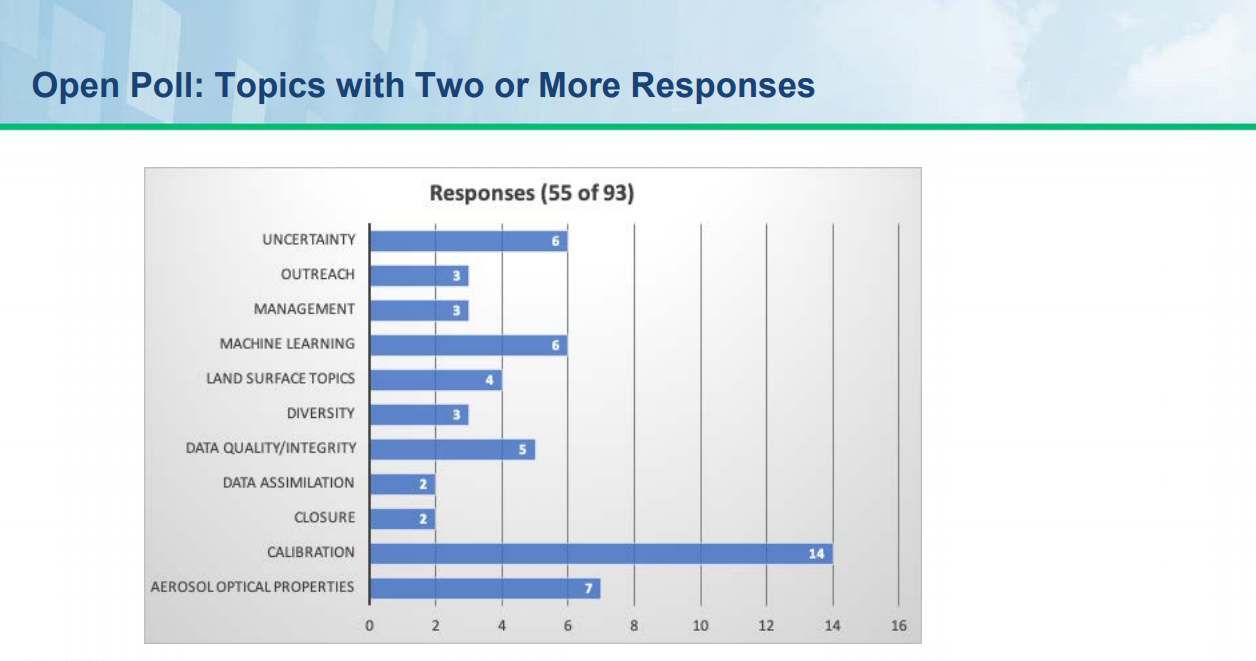Crafting ARM’s Decadal Vision Is a Group Effort
Published: 21 September 2020
Science community helps ARM leadership shape the user facility’s long view

You can now access the latest version of the Atmospheric Radiation Measurement (ARM) user facility’s long-term vision document.
The ARM Decadal Vision has been prepared in time for the user facility’s Triennial Review, an external review scheduled for November 2020. Though the document will not be finalized until after the review, ARM Technical Director Jim Mather is confident that the vision accurately reflects the priorities of ARM and its users.
The previous Decadal Vision—born out of a request from U.S. Department of Energy leadership following the 2014 Triennial Review—laid out a few clear paths for ARM to pursue. Among them was the development of the Large-Eddy Simulation (LES) ARM Symbiotic Simulation and Observation (LASSO) activity, which initially focused on shallow convection at ARM’s Southern Great Plains atmospheric observatory.
However, some areas outside of LASSO were “not as useful in defining a vision,” says Mather, who thought it was time for an update after six years. “I think this iteration is better that way, in terms of providing a coherent vision that would really make ARM better.”
Activities in the new Decadal Vision document are connected to four major themes: measurements, data analytics, data services, and observations to models.
ARM’s Infrastructure Management Board and communications leadership prepared the report, but to assess whether the vision was moving in the right direction, the group needed the science community to weigh in.
A Foundation for the Vision
“At (the 2020 ARM/ASR joint meeting), my goal was to look at the whole document and ask: ‘Is this reflecting the needs of the community? Is it a reasonable representation of where ARM should be going?’”
ARM Technical Director Jim Mather
Between August 2018 and March 2020, ARM held workshops on mobile facility operations, LASSO expansion, aerosol, cloud, and precipitation science, and aerial instrumentation. Input from those workshops, along with input from Atmospheric System Research (ASR) working groups, the broader community, and earlier workshops, helped the framework for the new Decadal Vision slowly take shape.
At the December 2019 American Geophysical Union (AGU) Fall Meeting in San Francisco, California, Mather held a town hall on the Decadal Vision. About 50 attendees gave feedback on topics that would likely appear in the document. That session was important to gain confidence in some areas and to understand areas of possible concern among users.
The next step was to develop a draft before the Joint ARM User Facility/ASR Principal Investigators (PI) Meeting, which was held virtually in June 2020.
“By the PI meeting, we had a pretty advanced draft of the document,” says Mather. “At that meeting, my goal was to look at the whole document and ask: ‘Is this reflecting the needs of the community? Is it a reasonable representation of where ARM should be going?’”
Responses to Community Feedback
Several weeks before the joint meeting, Mather shared that draft with the ARM/ASR community. During a plenary session on the meeting’s first day, Mather polled the audience in real time to confirm that the document’s eight main subthemes lined up with community needs.
Generally, the answers were in sync with Mather’s expectations. The audience had a largely positive reaction to increasing emphasis on spatial sampling (90 votes in support) and the coordinated use of intensive operational periods (80). Those topics emerged from earlier conversations within two ARM constituent groups—the Aerosol Measurement Science Group (AMSG) and the Cloud and Precipitation Measurements and Science Group (CPMSG).

Facilitating open-source software practices among ARM staff and the science community received the third-most votes in favor (79), but it also produced the most “concerned” responses (14).
During the AGU town hall, Mather drew out specific open-source concerns from the audience, such as making sure that code is trustworthy and that users retain credit for code they contribute.
“Those are legitimate concerns and things I know that the open-source people are thinking about,” says Mather. “They’re not unique to ARM, and they’re clearly things that we have to think about as we take this on. There is a strong motivation to develop capabilities in this area, but we will be working with the community as we take this on.”

At the joint meeting, audience members expressed the most neutrality toward a more flexible computing environment (69 votes), developing ARM Data Center software tools (59), and applying LASSO to more meteorological regimes (49).
“Those are probably people that just don’t see themselves using this resource,” says Mather.
As for topics that the audience wanted to see in the Decadal Vision, calibration was the clear victor. In response to that feedback, calibration is now called out in the document as part of the data characterization process. The intent is to make calibration processes “more available and transparent,” says Mather. “Our mentors are doing calibrations, but it’s not easy to find that information. Availability of this information is clearly a need and is an issue that we will be working to address.”
View Mather’s joint meeting presentation and the poll results.
Help ARM Carry Out Its Vision
Now that the bulk of the Decadal Vision is formed, ARM must work to refine it and see it through.
“There’s a lot of things in there that would have a big impact.”
ARM Technical Director Jim Mather on the Decadal Vision
At a high level, the vision aims to continue to improve the alignment of ARM measurements and data products and services with community needs. The document includes concrete near-term plans as well as some stretch goals related to artificial intelligence, new measurement capabilities, modeling, and sampling.
“There’s a lot of things in there that would have a big impact,” says Mather.
Following the Triennial Review, the document will be completed shortly after feedback is received from the review panel and DOE.
Users will be able to follow ARM’s progress on its Future Directions web page.
There will be opportunities for the science community to engage in the finer details of crafting and implementing strategies for achieving what is outlined in the Decadal Vision. For example, getting community feedback when considering open-source practices and new ARM Data Center software tools is high on the priority list. The vision also explicitly calls for new ideas with the expectation that needs will evolve and new technology will become available over the next decade.
If you have ideas, please reach out to the AMSG, CPMSG, and/or the ARM User Executive Committee (UEC). The UEC serves as the official voice of ARM users in its interactions with ARM management. Surveys and meetings are also planned to help generate more dialogue within the community.
Keep up with the Atmospheric Observer
Updates on ARM news, events, and opportunities delivered to your inbox
ARM User Profile
ARM welcomes users from all institutions and nations. A free ARM user account is needed to access ARM data.


















